
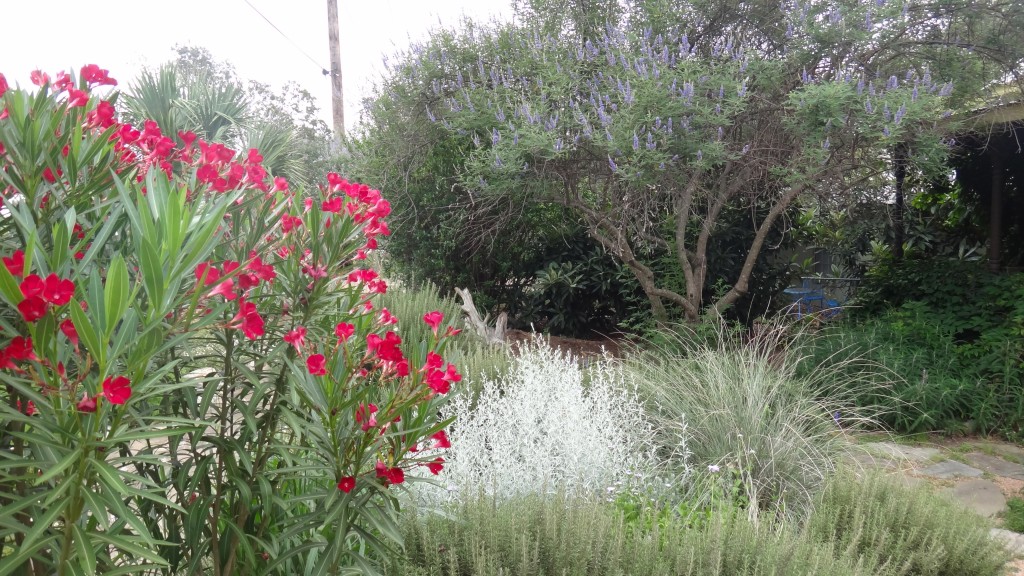
I went on my rounds the other day in the front of the Patch. Pulling on the the occasional 6ft strands of Bermuda grass that insist on growing through my rosemary urgh and admiring just how fast oleander grows and how prolifically it blooms when something caught my attention curbside.
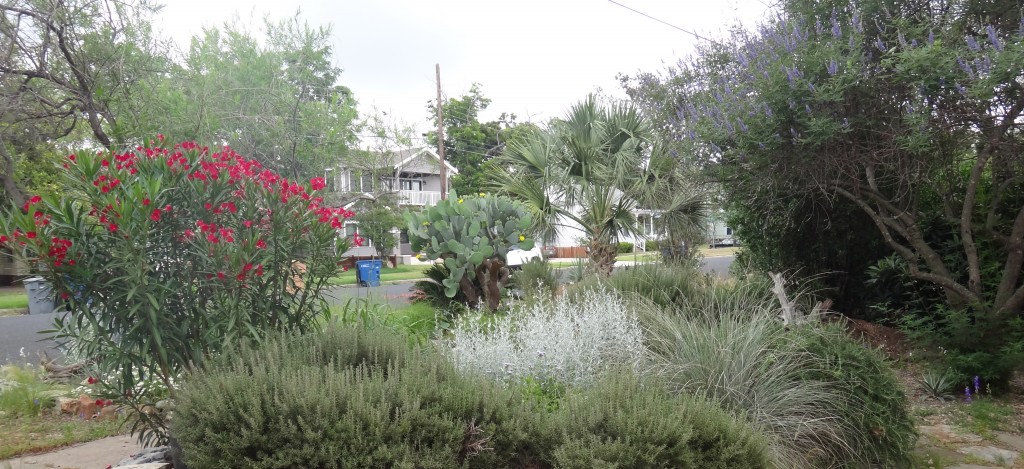
Below my opuntia tree,
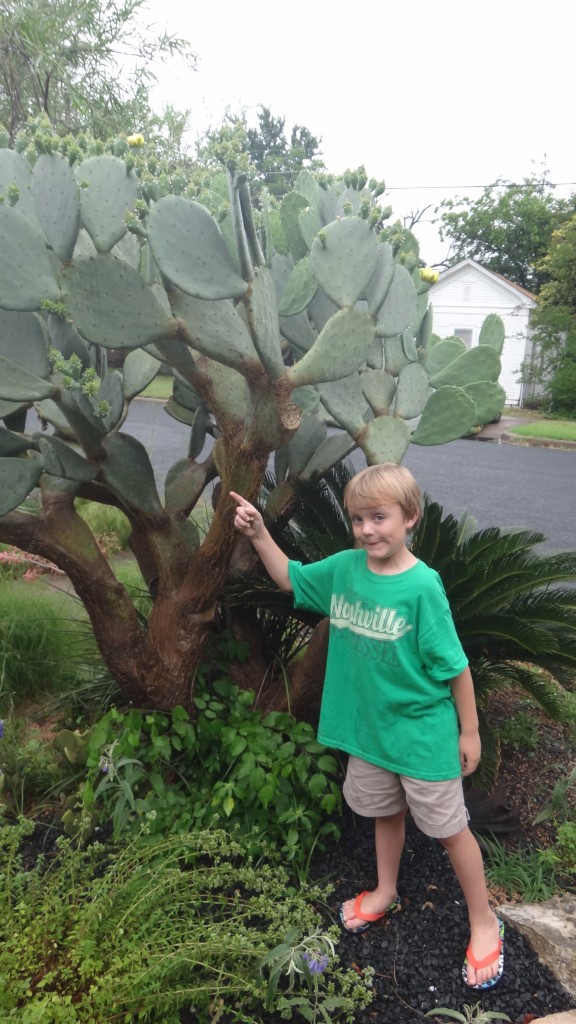
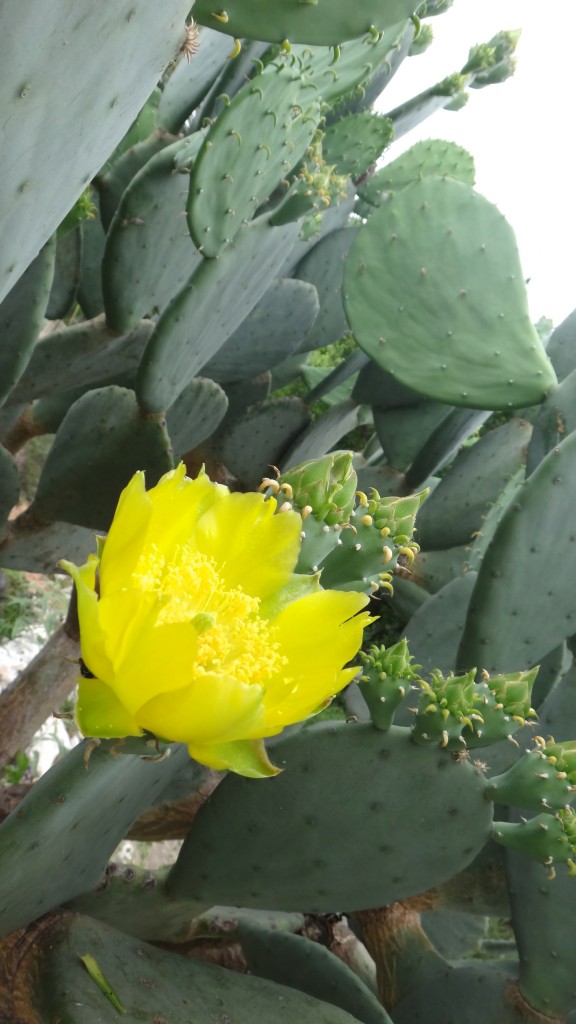
which is covered in buds and a few blooms. I noticed something bright, something orange.
I moved in closer.
Ignoring the weeds and the seeding Mexican oregano (I do very little maintenance in my front garden), there it was, shining brightly in the heart of my King sago palm.
Cycas revoluta
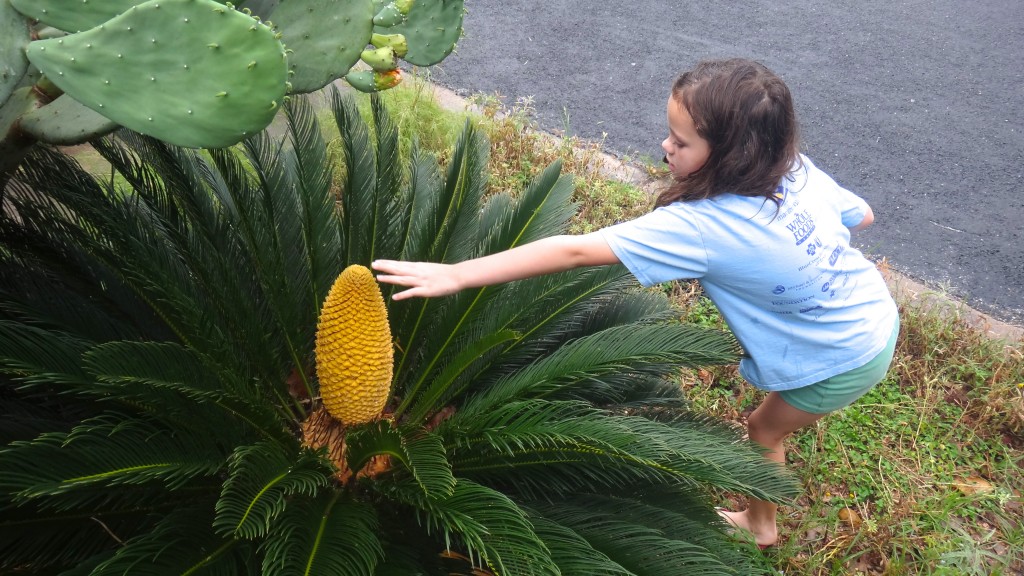
How could I have missed this golden egg?
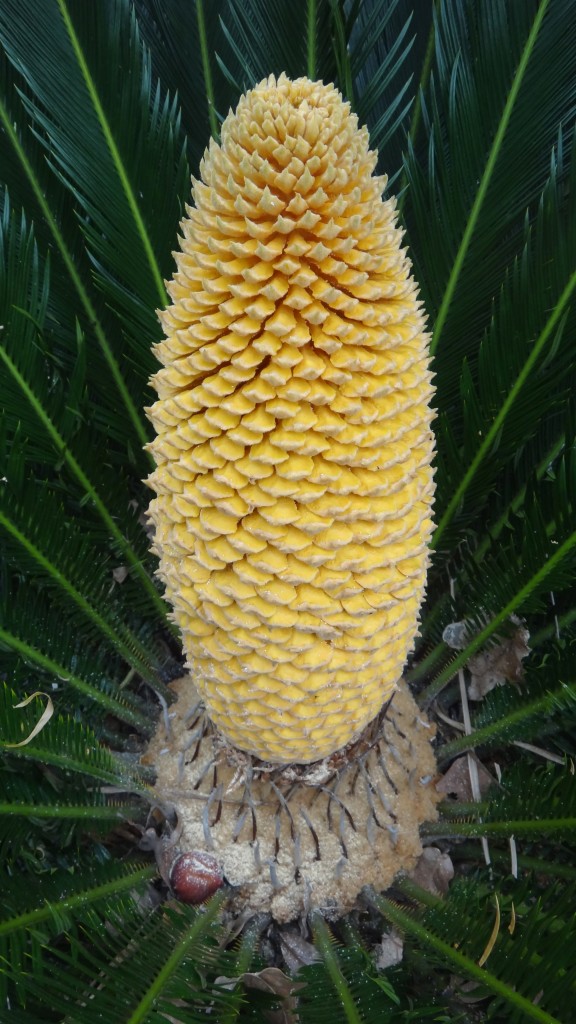
There were numerous other artifacts lying around the pollen coated base, I assume tribal offerings from the little folk who must now be worshiping the new Megalithic Structure on this plant that dates back at least 200 million years.
Sagos are cycads rather than actual palms as the name suggests, and they are dioecious, which means there are male plants and female plants and, like humans, to reproduce it takes both sexes.

Male sago palm flowers like this one produce a long (occasionally multiple), golden pollen cone-like structure called a strobilus. Most Sagos must be at least 15-20 years old before they are mature enough to bloom and reproduce.
Here is the female plant seedpod, about the size of a basketball,
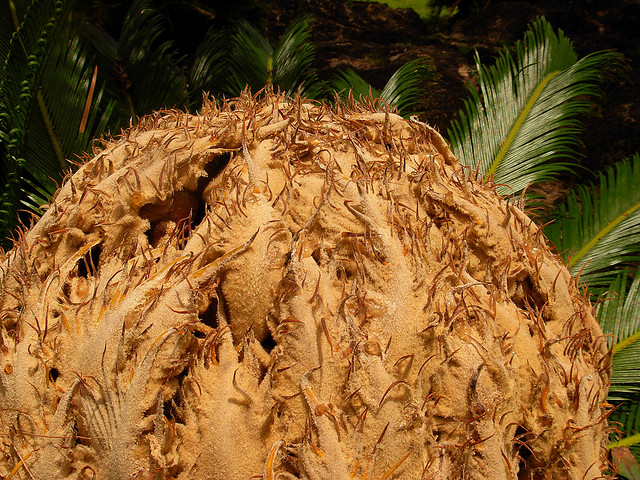
Photo credit: brewbooks
and here it is opening up, revealing the internal seeds:
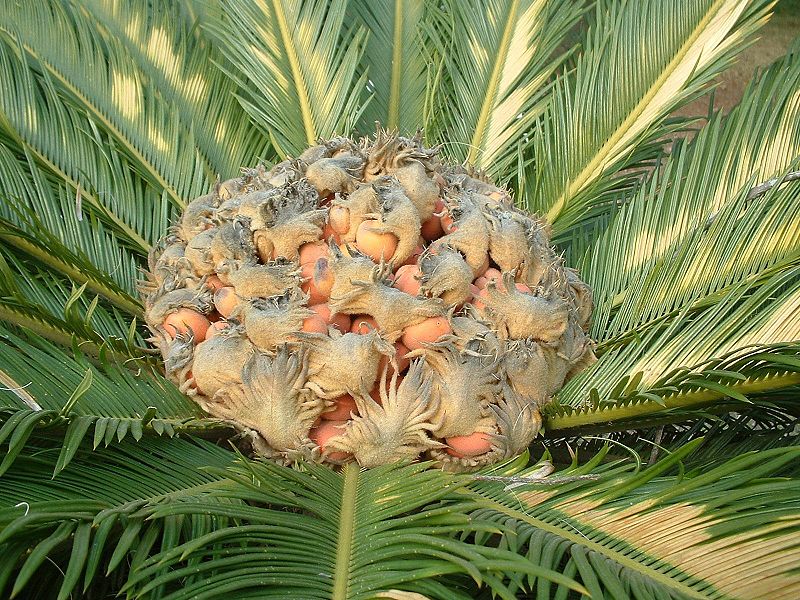
In their native habitat of southern Japan Cycads are pollinated by wind or insects, but to ensure pollination here in Central Texas you can dust some of the male pollen into the seed basket.
This can be done by crudely cutting off the male appendage and shaking it over the female

to disperse the pollen…aw come on!
A single male strobilus has plenty of pollen and can be used on several females at a time, or on one several days in a row.

Enough Austin!
Researching this post I did come across some hilarious documentation that stated some home owners have been so ’embarrassed’ with their neighborhood-shocking male strobili that they actually threw towels over them to hide them.

Imagine that scene?
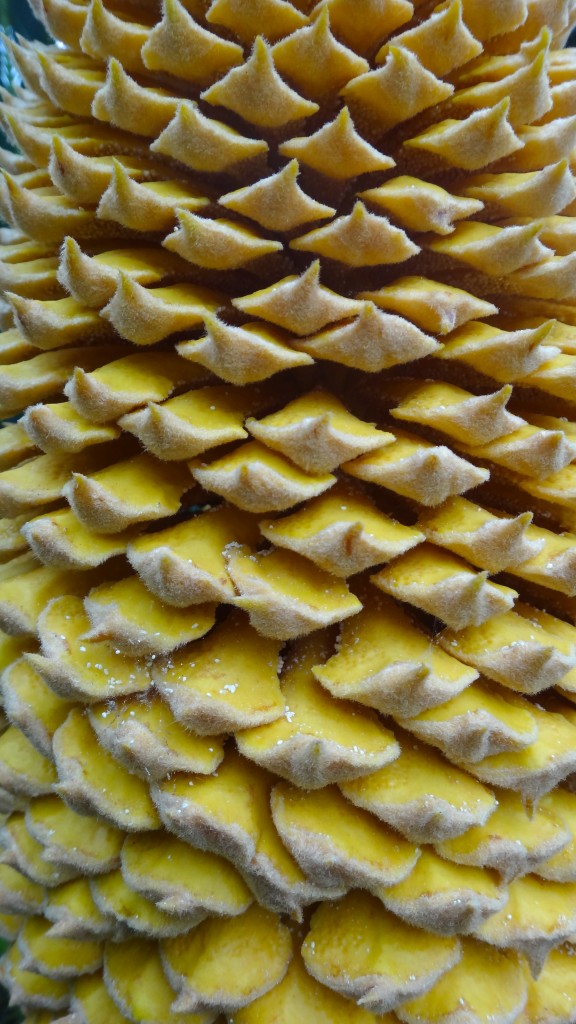
I also found out that sago palm seeds contain two carcinogens, macrozamin and cycasin, which can apparently be absorbed through the skin – so use impermeable gloves when working with these seeds.
Now…to find a female plant!
Does anyone in Austin know of one / seen one / have one and are willing to get these plants together?

Finally:
More welcome spring rains are hitting us…at about an inch an hour!
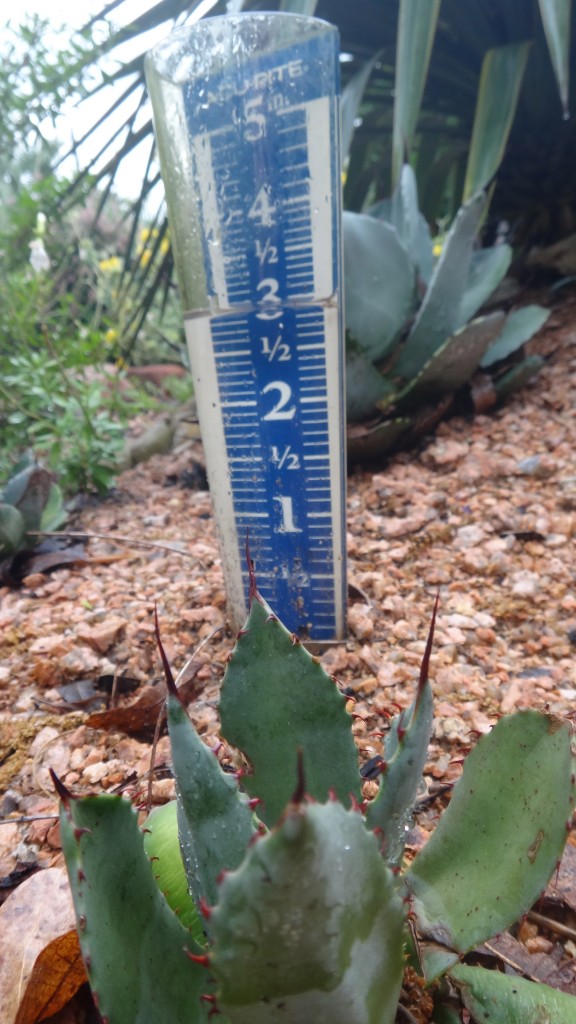
When this happens,
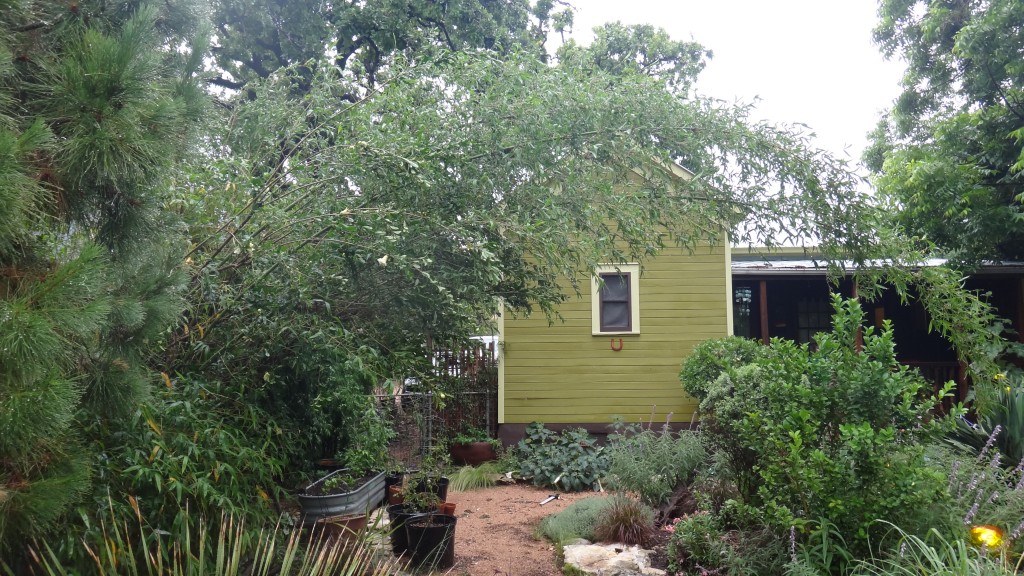
this happens to my Buddha’s belly bamboo…
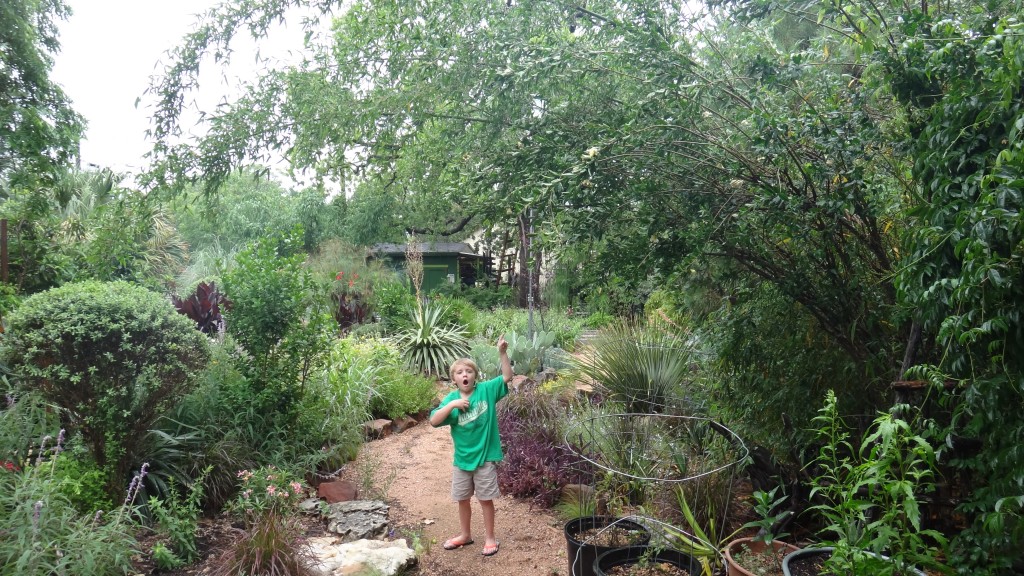
she’s a 40ft leaner.
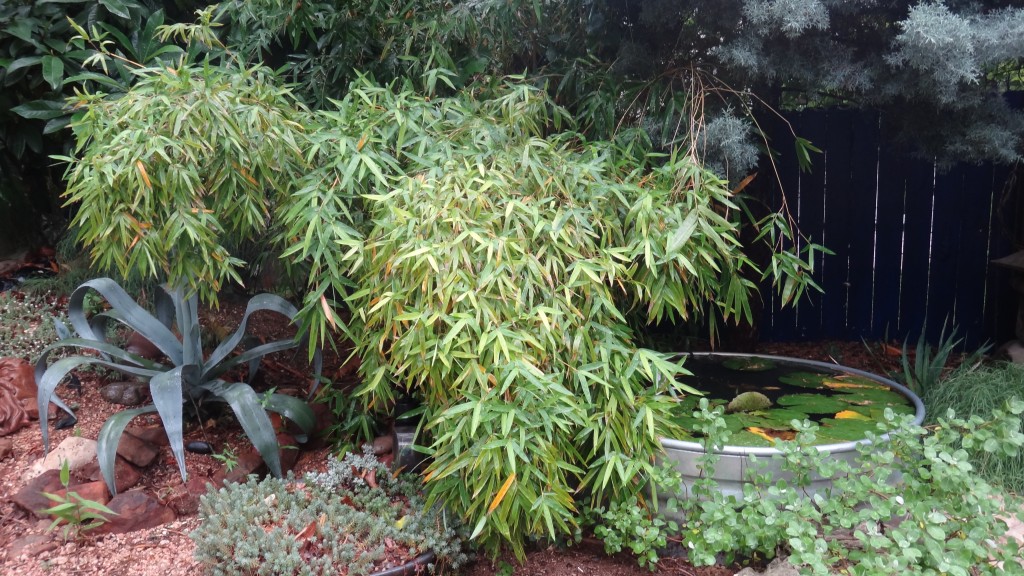
This Alphonse Karr bamboo also lowers its much smaller culms when saturated.
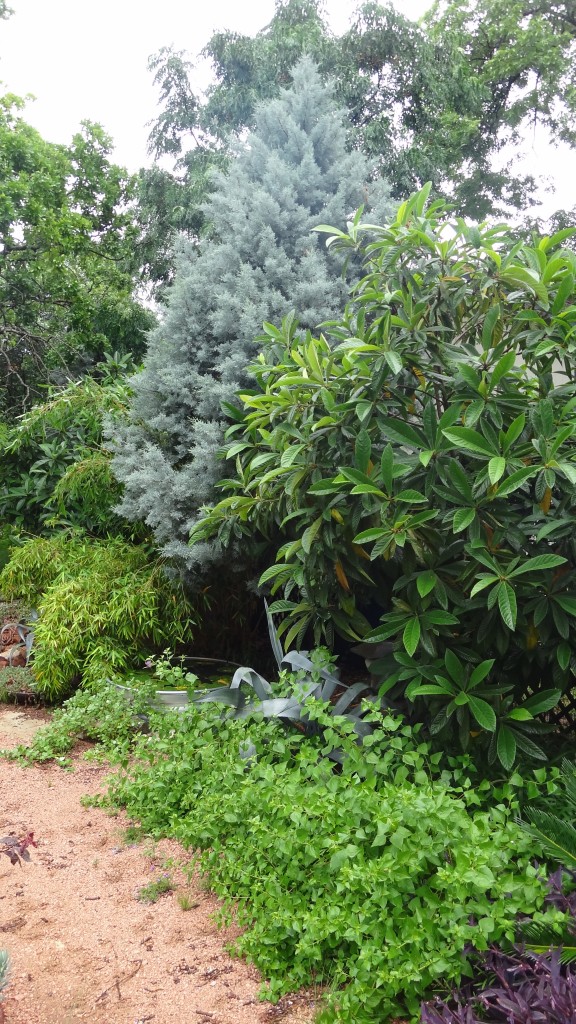
Fragrant mist flowers are out of control with the surprise moisture, as is this evergreen wisteria that threatens to consume anyone who lingers too long on my garden bench.
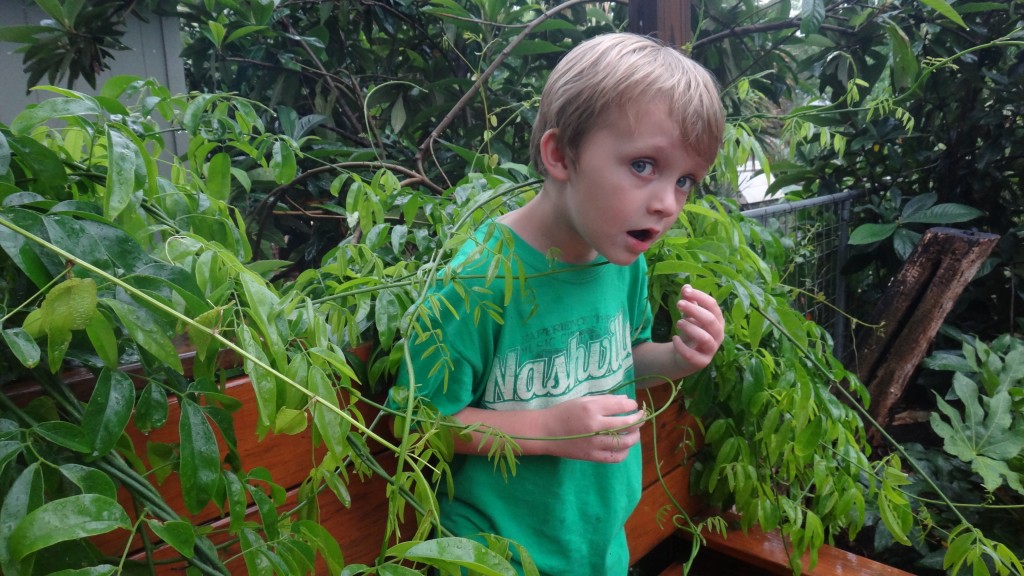
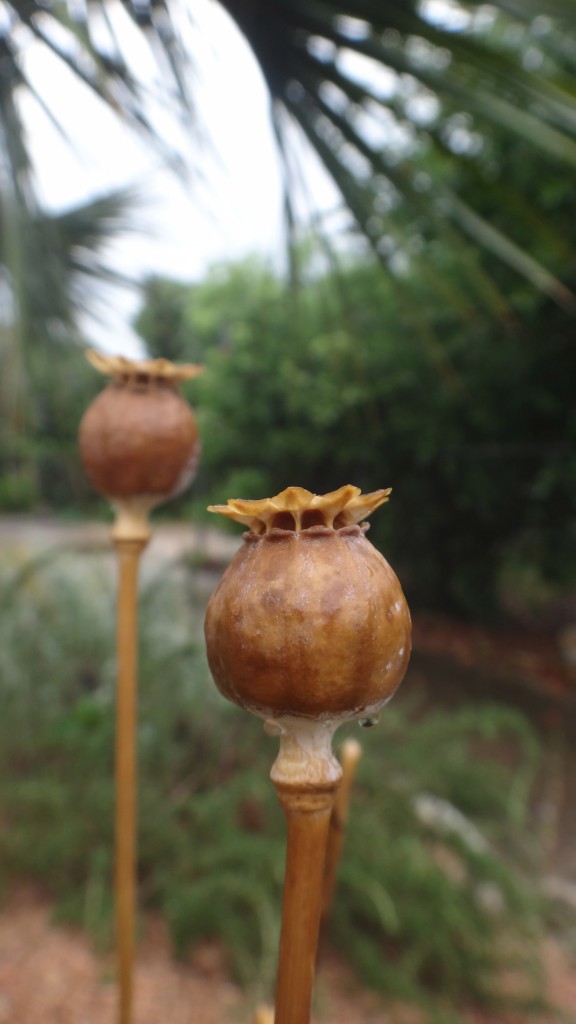
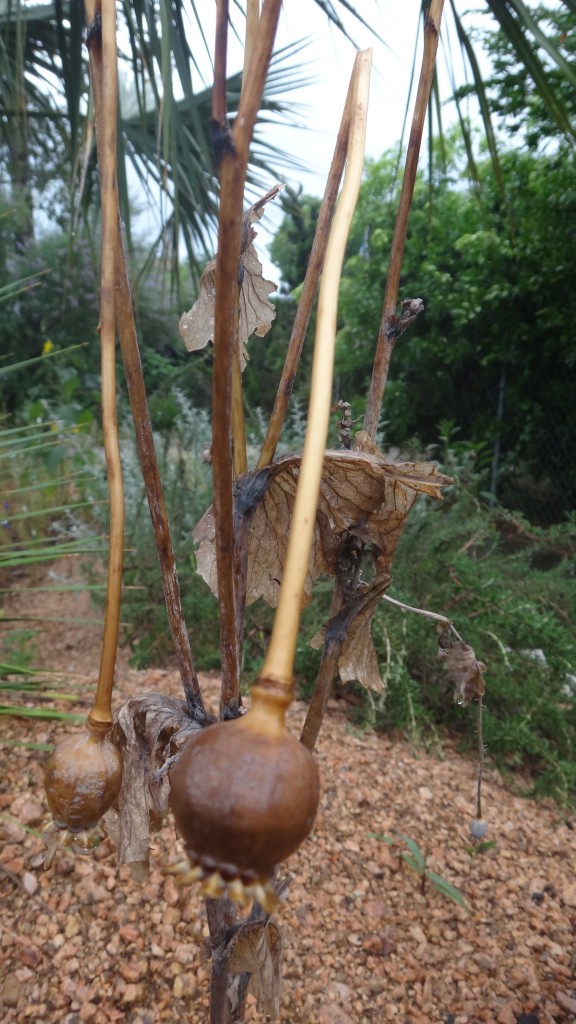
Spent poppy heads have buckled in the rain, dispensing their royal seeds through their crowns and into the damp granite.
And we all know the next devious scene…

They know what to do when it rains…
 Stay Tuned for:
Stay Tuned for:
“Megasporophylls!”
All material © 2013 for eastsidepatch. Unauthorized
intergalactic reproduction strictly prohibited, and
punishable by late (and extremely unpleasant)
14th century planet Earth techniques.
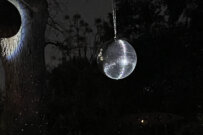





























































Comments on this entry are closed.
I’m sure you’re probably aware of this, but Sago palms are irresistible to many pets and are usually fatal when eaten. I have two of these outdoors and a dog who prefers not to venture outside alone, so it shouldn’t be a problem here. Lots of things in my garden are toxic, but I’ve never really worried about the local dogs chomping on my datura. It just sort of unnerved me to learn that my Sagos were deadly, as I always assumed they were rather benign. Shows what I know. I don’t mean to be an alarmist, but you have a ridiculously cute dog, and I just thought I might mention it.
I’m envious of your lush and diverse garden!
Hi Therese and thanks for dropping in.
Yes I was aware of the toxicity of the sago palms to pets and like you I have lots and lots of poisonous plants and shrubs. Kumo seems to prefer plastic and rubber parts to plants, only yesterday he devoured my son’s rubber bat…then promptly barfed bits of it back up…nice. This particular sago is in my Hell strip and he never goes out there so I am not worried but thank you for your concern.
We have just had 4 inches of rain in east Austin so yes, very lush at the moment. I have my fingers crossed for some sporadic rain through our summer…it can happen.
I was going to say it sure looked male to me and the toxicity has probably resulted in its success. I’ll bet there are females in the Hartman Garden at Zilker. Your front looks wonderful. Was it not just a couple of years ago that you redid this? That tree has grown very quickly. Sure hope mine don’t do that.
I bet there are some at Zilker Jenny, but I am not sure if they would take too kindly to an Englishman running around in a trench-coat shaking a dismembered strobilus over them?
I do not want to get arrested :-)
This sago and the opuntia were actually the very first plants that we planted in the Patch, the rest of the front has been an ongoing project and quite experimental, as it is a testing ground for plants that can withstand the harsh hell-strip conditions.
I have males & my neighbor has females. I grew some plants from her seeds before. Let me know if you want some! My males are showing off now too!
Hi Diana. How did you pollinate the seeds…I assume you have to do ‘the shaking’ while they are still on the plant?
Congratulations!
Why do you want a female? ; )
Is it that you want sago pups?
Let me know if you ever want sago babies-
one of my sagos, maybe a girl, is a prolific breeder.
Her main squeeze lives on the other side of the driveway-
definitely a boy- multiple cones.
Hi Cyndi, and yes, I wanted to try growing them from seed. I have transplanted from pups before but never grown from seed. I also have a couple hundred empty pots that need to be put to work.
The question is if the bermudagrass strands or oleander could win in the same bed! Always a struggle between two, eventually.
It is indeed David.
At my house, one has to be wary of the passion vines. Sit too long on the patio, and you just may become plant food. I named it Audrey. And don’t get me started on the terrestrial bromeliads (pumas, dyckias, etc.), I have been noticing that as more and more neighborhood chihuahuas go missing, the broms look better and better, hmmm… One probably has nothing to do with the other.
Hi Max P.
Yes, got to watch out for those passion and wisteria vines and whatever you do…do not fall asleep!
You have quite the little actor to illustrate your posts now. He’s a natural at showing the slow throttling horror of the wisteria vine, or fear over the impending collapse of the bamboo!
Hi Pam…I do indeed.
Redrum, redrum.
Stupid auto correct. *gurgling noise* Not PUMAS… PUYAS.
Funny though.
That must have been a huge surprise for sure! Very lovely. And I laughed soooooooooo hard at your response to “jenny” – HILARIOUS! Yeah…you better not go around town with that thing ;)
Hi Heather, it was indeed.
I think I may be getting into deeper water…Zilker may have been a safer option, now looking at a female out at D&B as a viable option :-)
https://www.eastsidepatch.com/2013/06/megasporophylls/
Hey Phillip,
Are you still interested in finding a male sago? I have a King Sago that is starting to form a cone. Let me know.
Sharon